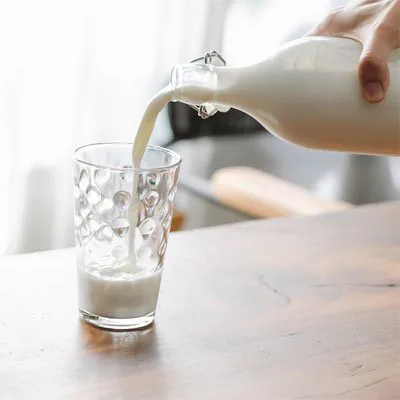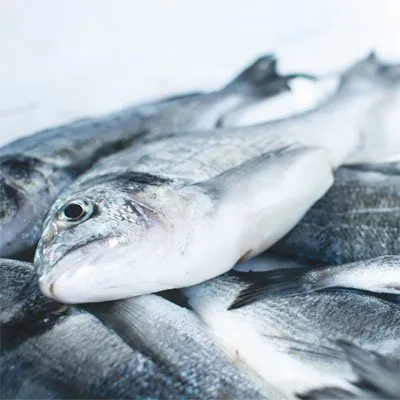In order to advertise special products in the trade accordingly, manufacturers must comply with legal limit values
Lactose intolerance is one of the most common food intolerances worldwide. In Switzerland alone, every fifth person is affected. It has now been proven that almost all people become lactose intolerant in the course of their life and that they can no longer tolerate dairy products or tolerate them significantly worse. The reason: In order to process milk sugar (lactose) in the body, the enzyme lactase is required. Its production, however, declines with increasing adulthood. Because lactose is found in many products to improve consistency or as a carrier, the population comes into contact with it significantly more than in previous generations – an explanation for why the number of lactose intolerant people is increasing.
In contrast to cow’s milk allergy, in which the body reacts to the milk protein, the immune system is not involved in lactose intolerance; the body simply cannot process the milk sugar. Lactose intolerant people can therefore replace appropriate foods such as milk with lactose-free products if necessary. Grocery stores now offer a large selection of appropriately declared special products.
But when can dairy products be described as lactose-free? Who is responsible for correct food labeling and do all dairy products automatically contain lactose?
We have put together answers to some important questions about the legal requirements for manufacturers of food labeling.
Food labeling of packaged goods
The European Food Information Regulation regulates what information product packaging must contain. Among other things, it is important for manufacturers to list all ingredients according to their proportion of the total weight in descending order as well as all additives (emulsifiers, flavors).
Particularly strict rules apply to allergen labeling. It currently comprises 14 substances to which people may be allergic or oversensitive. In addition to milk, these include soy, wheat and peanuts. Allergenic ingredients must be clearly highlighted in the list of ingredients – for example in bold or capital letters. If a product contains milk or milk components, these must be explicitly named as such.
The labeling obligation for food also applies to operators of online shops who sell prepackaged food. All mandatory information about ingredients, allergens, etc. must be made available to the consumer before the purchase is made.
Limits for lactose-free products
Unprocessed products such as cow’s milk have the highest lactose content. In cheese, on the other hand, the milk sugar is only present in small quantities. In general, the longer a dairy product has matured, the less lactose it contains, as the lactose is broken down into its components during the maturation process. Milk chocolate, for example, still has a lactose content of around 13 percent, while cheeses such as Parmesan or Gouda usually have less than 0.1 percent lactose.
Food retailers now offers a variety of lactose-free products. In contrast to foods labeled as vegan, which are often based on plant-based milk alternatives such as soy, oats or almonds, lactose-free milk or yoghurt are also made from cow’s milk. The lactose contained is split into the building blocks glucose and galactose during the manufacturing process, which means that the products can be consumed by lactose intolerant people without any problems.
According to the ordinance of the Federal Department of the Interior (FDHA) on special foods, a food is considered to be lactose-free if the ready-to-eat product contains less than 0.1 g of lactose per 100 g or 100 ml. Only then can manufacturers advertise and declare their dairy products as lactose-free. Products such as hard cheese, which generally contain little or no lactose due to the long ripening time, can be described as “naturally lactose-free”.
Trace information on food packaging
Traces of lactose cannot be ruled out in many industrially manufactured products – a company often produces both lactose-free products and foods containing lactose. Mixing (contamination) can therefore occur during transport, storage or during the manufacturing process. According to food legislation, a so-called “may contain” (may contain milk, may contain traces of milk) must appear at the end of the list of ingredients be advised of unintentional mixing if the lactose content could exceed 1 gram per kilogram or liter of ready-to-eat food. Possible mixtures below this limit can be voluntarily shown with such a notice. In principle, manufacturers must be able to prove that all precautions have been taken to prevent contamination during production.
Reliable quality management through regular analyzes
The manufacturers themselves are responsible for ensuring that their products are correctly labeled, that all ingredients are identified and that they are entitled to use the “lactose-free” label. In order to meet the legal requirements, the food labels should be checked by professional service providers. Depending on the manufacturing process, special laboratories such as Biolytix rely on tailor-made analytics: Lactose-free testing of foods is offered for all work steps in the food manufacturing process – from the raw material to the end product and in addition to hygiene tests.




